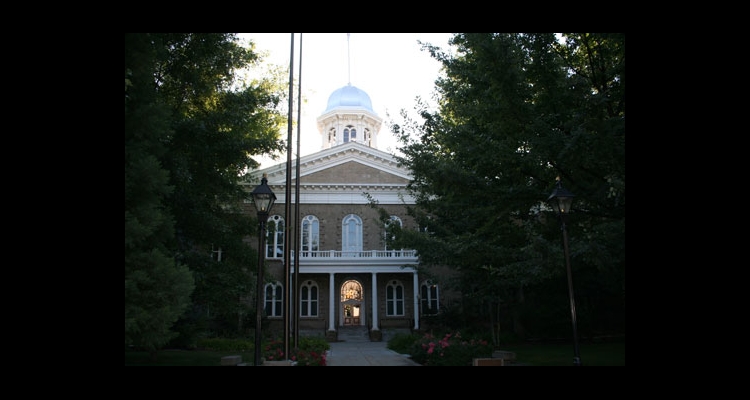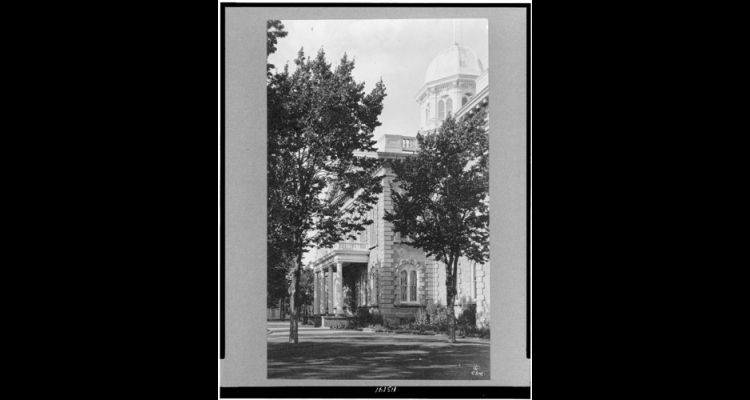Nevada State Government: An Overview
On March 2, 1861, United States President James Buchanan signed into law a bill passed earlier by Congress to establish the Territory of Nevada from a portion of the Utah Territory. Carson City was selected to be the seat of government of the new territory and has served as Nevada's state capital ever since.
Nevada was rushed into statehood earlier than other states because of issues involving the Civil War and the commitment of President Abraham Lincoln to preserve the union. On October 31, 1864, Lincoln signed the act to make Nevada the thirty-sixth state.
The Nevada constitution was patterned closely after the state constitution of California. The members of Nevada's second constitutional convention of 1864 proved to be a remarkably able group. The thirty-nine members of the convention had considerable experience and much-needed common sense. It is interesting to note that convention president J. Neely Johnson previously served as the governor of California between 1856 and 1858.
Like the federal system, Nevada's original constitution provided for three independent and co-equal branches of government—executive, legislative, and judicial. Few changes have been made to the Nevada constitution of 1864 that affect Nevada's basic governmental structure.
Today, the largest of the three branches is the executive branch. For representation, there are six "constitutional officers." The people of the state elect each of these officers once every four years. They are independent from one another and often represent different political parties. These officers are the governor, lieutenant governor, secretary of state, state treasurer, state controller, and attorney general. The duties of the constitutional officers may be summarized as follows:
Governor—serves as chief executive of the state.
Lieutenant Governor—presides over the Nevada senate and casts a vote in the case of tie, fills any vacancy during the term of the governor, and chairs the commissions on Tourism and Economic Development.
Secretary of State—is responsible for overseeing elections, commercial recordings, securities, and notaries.
State Treasurer—oversees state treasury, sets investment policies for state funds, and administers the Unclaimed Property Division and the Millennium Scholarship Program, along with the other college savings programs.
State Controller—is responsible for paying the state's debts, including state employees' salaries; maintains the official accounting records; and prepares the annual statement of the state's financial status and public debt.
Attorney General—acts as the chief law enforcement officer, provides legal services to the state and state agencies, and defends or prosecutes litigation involving the state or state agencies.
The governor, secretary of state, and attorney general sit on the State Board of Examiners whose duties include review of tort claims, independent contracts, leases, and requests for payments from specified state accounts. Additionally, the constitution provides for one major elected body to direct and manage higher education programs, faculty, facilities, and curricula in the state. This function is assigned to the Board of Regents of the Nevada System of Higher Education, which currently has thirteen members elected from around Nevada.
The primary responsibility of the executive branch is to carry out the laws, programs and services, and policies of the state as specified in legislation enacted by the Nevada legislature and signed by the governor. The six constitutional officers, executive agencies, the board of regents, and others in the executive branch typically make recommendations to the legislature regarding funding requirements as well as policy and program needs during each legislative session.
The Nevada legislature is made up of two houses of equal importance—the senate and the assembly. The constitution specifies that the total number of members of the legislature may not exceed 75. Currently, there are 63 members of that body—21 in the senate and 42 in the assembly. The members are elected from around the state in legislative districts that are redrawn following each decennial United States Census. Nearly two-thirds of the members currently represent portions of populous Clark County in accordance with America's "one person, one vote" legal doctrine.
One primary responsibility of the legislature is to pass laws governing the state. The legislature introduces, debates and approves new state laws, evaluates and revises existing state laws, and repeals laws that are unnecessary, antiquated, or no longer needed. Additionally, a major responsibility of this branch is to receive testimony and debate and approve legislation that sets forth the state budget, school funding, and necessary appropriations for the next biennium. A related responsibility of the senate and assembly is to develop and revise, as needed, a fair and equitable tax structure to support the state budget, schools, and other approved expenditures.
A supreme court heads Nevada's judicial branch. The supreme court originally was made up of three elected justices. The legislature approved an expansion of that body to five members in the 1960s and to the current number of seven in the late 1990s. The basic responsibility of Nevada's supreme court is to consider cases involving the constitutionality and legality of laws approved by the legislative branch and governor, the application of those laws, and the interpretation of laws when required. Nevada does not have an intermediate appellate court (court of appeals), thus the supreme court is responsible for appeals from rulings of the district courts.
Under the broad umbrella of the judicial branch are the district courts of Nevada, the city (municipal) courts, and the justices of the peace. These courts are the responsibility of local governments except for the salaries of the sixty district court judges, which are paid by the state.
The 2005 legislature approved over 25,500 full time positions in state government for the 2005 to 2007 biennium. Approximately 290 work in the legislative branch, 130 in the judicial branch, and over 25,100 in the executive branch. Nearly 7,400 employees under the broad umbrella of the executive branch are professional and classified employees in Nevada's universities and colleges.
Article Locations
Related Articles
None at this time.
Further Reading
None at this time.


